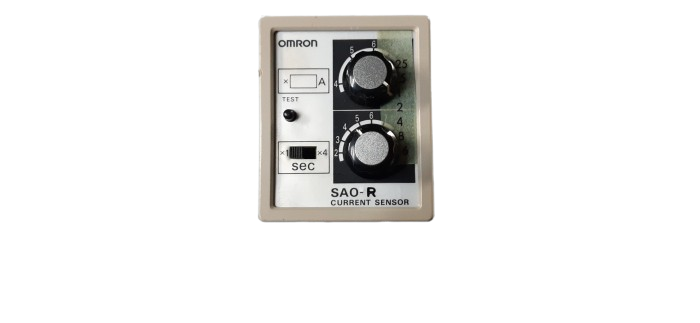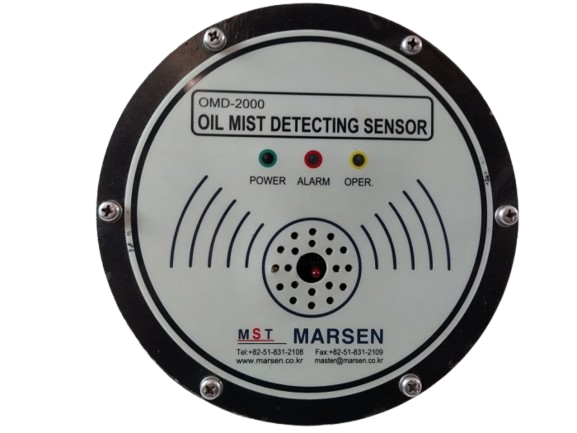Sensors play an extremely important role in the industrial automation world changing due to concerns regarding efficiency, precision, and safety. The purpose of these sensors would be collecting data in real-time so that decisions could be taken by automated systems, carried out their operations, and subsequently call for minimal interference from the human side. These are essential fields of manufacturing, oil and gas, pharmaceuticals, and logistics as well, which in most cases essentially depend on automation; therefore, knowledge of the most common types of sensors and their applications would be necessary. This is a very deep insight into the different types of sensors used in industrial automation, their working principles, and value to modern industrial setups.
What are Sensors in Industrial Automation?

These are devices that could sense any form of physical, chemical, or environmental change and convert them into signals that may be interpreted by a system or an operator. These sensors monitor parameters such as:
- Temperature
- Pressure
- Proximity
- Motion
- Humidity
- Vibration
- Flow
Better accuracy, efficiency, and safety in operations are achieved through the integration of sensors into industrial automation systems.
Types of Sensors Applied to Industrial Automation
1. Proximity Sensors
Proximity sensors detect the presence or absence of an object without contact. Proximity sensors are implemented in some areas; they are also used to recognize an object at the conveyor belts, alignment of the robotic arms, and also in machine guarding.
Types of Proximity Sensors:
- Inductive Sensors: A metallic object sensed through an electromagnetic field.
- Capacitive Sensors: They both metallic and non-metallic sensing due to changes in capacitance.
- Ultrasonic Sensors: Detect the presence of an object regardless of its material using sound.
- Photoelectric Sensors: Observe objects using light
Applications:
- Machine part detection
- Machine monitoring
- Obstruction for accidents prevention
2. Temperature Sensors
Temperature sensors measure the amount of heat in most industries, which are involved in their processes. They offer a way to achieve the maintenance of desirable working conditions in any manufacturing and chemical processing industry, including food production industries.
Temperature Sensor Types
- Thermocouples: A change in voltage will be measured that is proportional to temperature.
- RTDs (Resistance Temperature Detectors): The changes in metals as regard resistance can be utilized for the purpose of measurement of temperature.
- Infrared Sensors: It calculates the temperature even though it's not in physical contact.
- Thermistors: Highly sensitive, though within an extremely limited range.
Applications
- Furnace and boiler temperature control
- For uniformity in the condition for preserving food products
- To avoid overheating machines
3. Pressure Sensors
Pressure sensors are pressure sensors that measure the pressure forces of fluids and gases. This impacts many industrial concerns such as oil and gas, water treatment, and pharmaceuticals.
Pressure Sensors Type
- Absolute Pressure Sensors: It measures pressure above a vacuum
- Measuring Pressure Sensors: It measures the pressure that is more or less than atmospheric pressure.
- Differential Pressure Sensors: These sensors measure the pressure difference between two points.
Applications:
- Monitoring hydraulic systems
- Measurement of the tank level in storage systems
- Safety of pipeline functioning
4. Motion Sensors
Motion sensors can detect the movement or vibration which takes place within a machine or system. They have been used in the most basic applications in robotics, conveyor systems, and to safety.
Types of Motion Sensors:
- Accelerometers: it measures the change in velocity.
- Gyroscopes: This computes the rotational motion
- Vibration Sensors: They measure the vibrational motion in the machine; this predicts their failures.
Applications:
- The robotic arm works based on the movements.
- Monitors the conveyor belt's work.
- It will predict the breaking of the rotatory equipment.
5. Flow Sensors
Flow sensors determine the movement of liquids or gases through pipes. These sensors have been applied very widely in such industries as water treatment, chemical manufacturing, and oil and gas.
Types of Flow Sensors
- Mass Flow Sensors: It will measure the mass of the fluid.
- Volumetric Flow Sensors: It measures the volume of the fluid.
- Turbine Flow Sensors: The rotating blades measure the flow rate.
Applications
- Fluid flow monitoring in pipelines.
- Proper dosing in chemical processes.
- Measuring the water intake in water treatment plants.
6. Level Sensors
These measure the liquid and solid levels in storage tanks and silos. It prevents overflows and shortages besides keeping the right stock.
Types of Level Sensors
- Ultrasonic Level Sensors: They work by emitting sound waves to measure the liquid level.
- Capacitive Level Sensors: The levels are directly proportional to their capacitance.
- Radar Level Sensors: It employs radar waves to detect objects in an accurate way.
Applications
- Measuring the level of an oil refinery tank
- To calculate the stock level of the silo
- To measure the precise level in chemical reactor
7. Optical Sensors
Optical sensors identify the presence of an object by detecting it with light and calculate distance or track process changes. Their applications range from quality monitoring up to safety devices.
Types of Optical Sensors
- Photoelectric Sensor: Recognize the existence of an object by way of its beam lights.
- Laser Sensor: The application measures accurately some distance.
- Fiber Optic Sensors: Application measures changes in light from the direction of travel using a fiber optic cable.
Applications
- Quality monitoring on the production lines
- Installation of the robotic system.
- Fault detection in assembly lines.
8. Humidity Sensors
Humidity sensors are those detectors that perceive the moisture contents in air or other gases. They have captured an important role in the list, among others. Such as: HVAC, food storage, pharmaceuticals.
Types of Humidity Sensors:
- Capacitive Humidity Sensors: It identifies the change caused in capacitance due to humidity
- Resistive Humidity Sensors: These identify a change in electric resistance
Applications:
- Food storage at best conditions.
- Clean room humidity monitoring.
- The Best Working Conditions in the HVAC System.
Advantages of the Use of Sensors in Industrial Automation
- Productivity: Sensors measure and regulate online; thus, there is negligible time wasted and productivity goes higher.
- Safety: Hazards detectors: they curb accidents and working safely is feasible.
- Quality control: Constant checks are provided, thus the reduced error, high quality of manufactured products.
- Monetary benefits: Predictive maintenance through sensors minimizes the break time and maintenance time that subsequently builds cost due to the breakdowns.
How to Choose the Right Sensor for Your Application

- Compatibility Check: The sensor must be compatible with the communication protocol that your system uses.
- Accuracy Requirement Review: Decide the sensor which would deliver the desired accuracy for your application
- Durability First: Sensors shall be designed to last harsh conditions prevalent with industrial applications.
- Vendor Support Review: Reliability in manufacture which is excellent on support and documentation shall be preferred.
Future Trends of Industrial Sensors
- IoT Integration: Sensors are now intelligent, and hence, integration of IoT can be done to perform analytics in real-time and also for real-time monitoring.
- Wireless Connectivity: The sensors also remove the use of cables; hence, the installation becomes easier as well as more flexible.
- Miniaturization: Sensors are made extremely small for highly minuscule industrial systems.
- Self-Diagnostics: Yes, sensors can self-diagnose and provide fault reports which can save a lot of time in the maintenance.
- AI Integration: Using AI-enabled sensors, it becomes possible to take decisions more swiftly and more insightfully.
The basic unit of industrial automation lies in the sensor that permits very accurate observation, control of efficient action, and improvement of safety. Specific kinds of proximity sensors and temperature sensors were available that performed the intended work. Now with progressing technology, there come better smart, next-generation sensors which give rise to smart, better, and intelligent factories as the starting stage of Industry 4.0. With the knowledge of the various types of sensors and their applications, it is quite possible to take the right decision in industries for optimizing the automation systems in a competitive prospect.



Validate your login
Sign In
Create New Account